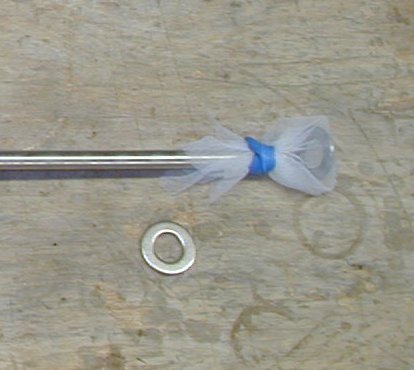I have the following setup:
- a new edgestar kegerator
- new corny ball lock keg
- a "homebrew conversion" kit from homebrewing.org for the kegerator (since it came rigged for commercial kegs). This was basically the two ball lock fittings needed for the keg. I cut the fittings for the commercial fitting off and put these on instead.
- freshly filled 5 lb CO2 tank, with the regulator that came with the kegerator
I brewed a pale ale and put it in the keg yesterday afternoon. It was room temperature. I did my best to "force carbonate" it by putting pressure up to 20 psi and gently shaking the bottle. Then I let it sit until this evening. I left it at 20 psi overnight and turned it down to 10 psi this morning.
This evening I tried pouring a beer, and pretty much nothing came out. After holding the handle open for a minute or so I had half a pint. The beer was cold and pretty close to appropriately caronated but the pour speed is way too slow, it barely trickles out.
Here's what I've tried:
- Checked that the gas was turned on, both at the tank and the shutoff on the regulator
- Checked the gas pressure was appropriate (I tried it at 10 psi and 20, no difference).
- Checked that there was pressure in the keg - if I pull the release on the lid, I get a strong rush of gas and I hear the gas flowing out of the tank. There's clearly pressure in the keg. After pulling the release, it gets back up to pressure in just a few seconds, so it seems like there's plenty of flow of gas.
- Took the pin lock fitting on the beer line apart and made sure it wasn't broken or stuck. It seemed OK, but I don't really know what I am looking at.
- Checked that the beer line wasn't kinked. It's about 5 feet long and gently coiled in the kegerator, no kinks.
- Emptied the beer line out to make sure there wasn't frozen beer in it
- Took the tower off the top of the unit to make sure there were no line kinks inside it. It looks fine.
- Took the faucet apart. No obvious issues, but I really don't know what I'm looking at.
- Checked the temp in the kegerator with a thermometer. It was 39 degrees.
Any ideas? I feel like I've checked anything I could think of but I'm also new enough at this that I don't know where to look and, to be honest, I don't really understand the equipment well enough to troubleshoot any further.
- a new edgestar kegerator
- new corny ball lock keg
- a "homebrew conversion" kit from homebrewing.org for the kegerator (since it came rigged for commercial kegs). This was basically the two ball lock fittings needed for the keg. I cut the fittings for the commercial fitting off and put these on instead.
- freshly filled 5 lb CO2 tank, with the regulator that came with the kegerator
I brewed a pale ale and put it in the keg yesterday afternoon. It was room temperature. I did my best to "force carbonate" it by putting pressure up to 20 psi and gently shaking the bottle. Then I let it sit until this evening. I left it at 20 psi overnight and turned it down to 10 psi this morning.
This evening I tried pouring a beer, and pretty much nothing came out. After holding the handle open for a minute or so I had half a pint. The beer was cold and pretty close to appropriately caronated but the pour speed is way too slow, it barely trickles out.
Here's what I've tried:
- Checked that the gas was turned on, both at the tank and the shutoff on the regulator
- Checked the gas pressure was appropriate (I tried it at 10 psi and 20, no difference).
- Checked that there was pressure in the keg - if I pull the release on the lid, I get a strong rush of gas and I hear the gas flowing out of the tank. There's clearly pressure in the keg. After pulling the release, it gets back up to pressure in just a few seconds, so it seems like there's plenty of flow of gas.
- Took the pin lock fitting on the beer line apart and made sure it wasn't broken or stuck. It seemed OK, but I don't really know what I am looking at.
- Checked that the beer line wasn't kinked. It's about 5 feet long and gently coiled in the kegerator, no kinks.
- Emptied the beer line out to make sure there wasn't frozen beer in it
- Took the tower off the top of the unit to make sure there were no line kinks inside it. It looks fine.
- Took the faucet apart. No obvious issues, but I really don't know what I'm looking at.
- Checked the temp in the kegerator with a thermometer. It was 39 degrees.
Any ideas? I feel like I've checked anything I could think of but I'm also new enough at this that I don't know where to look and, to be honest, I don't really understand the equipment well enough to troubleshoot any further.



